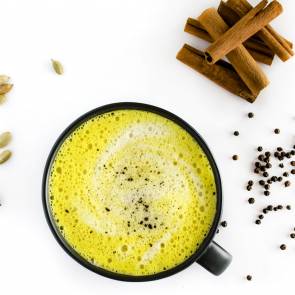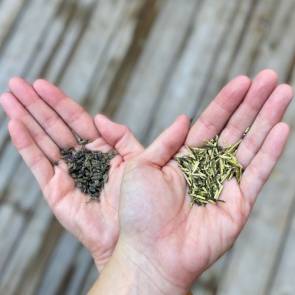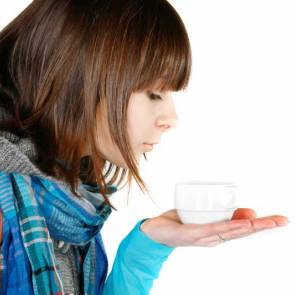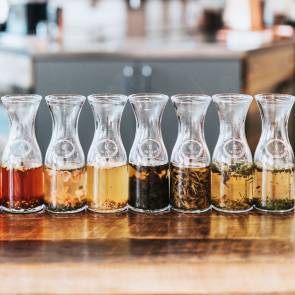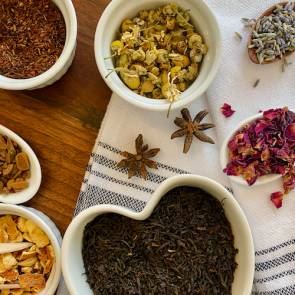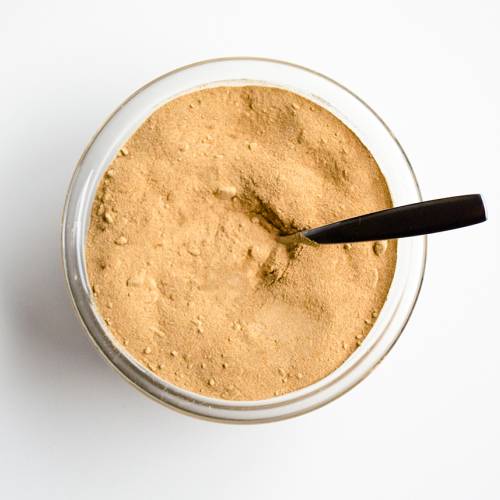
There is a lot of buzz around maca lately, and with good reason. Although maca has been consumed for thousands of years, it has only been gaining in popularity over the past decade. Maca is a type of vegetable that is native to Peru. It is a cruciferous vegetable, related to broccoli, cauliflower, cabbage and kale. The root is the part which is typically consumed.
It was used as both a food and a medicine by Ancient Peruvians, mainly as a medicine for fertility and sexual desire. Today we still recognize the increase in libido, but have also found maca to contain many other health benefits.
There are two types of maca you will commonly find – raw and gelatinized. Shanti Tea offers gelatinized maca at this time. Here is a bit more information on the two to help you decide which is best for you.
Raw Maca
To create raw maca, it must never be heated past 46°C. It is dried and then ground into a powder. This helps to preserve the full spectrum of nutrients that maca has to offer. However, raw maca is a starch and is difficult for most to digest. Some studies have indicated that raw maca can lead to toxicity if consumed in high doses. It is suggested that if you choose to consume raw maca, you ensure to consume no more than 1 tablespoon per day.
Gelatinized Maca
Gelatinized maca undergoes a bit more processing than raw. It is sun dried, boiled and then pressurized to remove starches. This process removes some of the nutrients that maca has to offer, but still retains many. The benefit of removing the starch is it makes maca easier to digest, and removes the concern of toxicity as a result of overconsumption. Because it is easier to digest, it also means that it is easier to absorb the many nutrients maca has to offer.
Health Benefits
There is still much to fully learn about maca, as studies are published we will be sure to update this page. The following is a list of the typical uses of maca.
1. Rich in Vitamins and Minerals
Maca contains many essential nutrients, vitamins, and minerals. The percentages below reflect the Recommended Daily Intake (RDI) for a 1 oz (28g) serving.
Note: There is approximately 3g of maca per teaspoon.
|
Fiber: 8% |
Protein: 8% |
Vitamin C: 133% |
|
Calcium: 7% |
Potassium: 16% |
Vitamin B6: 16% |
|
Manganese: 11% |
Copper: 84% |
Iron: 23% |
It contains 20 amino acids, is a good source of protein and carbohydrates.
2. Energy
Maca has long been used to increase energy. It is rich in proteins, vitamins and minerals that help to contribute to a boost in endurance.
3. Rich in Antioxidants
Antioxidants are those helpful molecules that help to prevent or stop damage done by free radicals in our system (free radicals are caused by oxidants, hence, antioxidants). Plant-based foods typically contain antioxidants, some with higher levels than others.
4. Mood Booster
Maca has shown in some studies to help relieve anxiety and stress and symptoms of depression due to the presence of flavonoids.
5. Libido and Fertility
We have already briefly mentioned that maca was used to increase libido and fertility. There is little research to prove this, but it is still used in that capacity today. The studies that were done showed that maca helped to increase sperm count, sperm motility, women’s fertility and a boost in sexual drive in both men and women.
6. Immunity and General Health
Maca has been shown to improve general health and the immune system in some studies. It is also believed to help promote prostate health, in studies it helped to reduce the size of the prostate in animals, which could contribute to a decreased risk of prostate cancer.
It is also said that maca may improve skin health, supposedly helping to clear acne, decrease sensitivity to cold.
The vitamins and minerals present in maca help to support some of the health and immune system claims made.
Maca is an Adaptogen
Simply put, adaptogens help your body adapt to stress. Interestingly, adaptogens grow in harsh and stressful conditions, so it makes sense that they can help our bodies with stressors, whether chemical, physical or biological. Based on the above points, you may be able to see what makes maca an adaptogen. It helps the body combat actual stress and anxiety, provides a boost of energy, and is abundant in antioxidants, vitamins, minerals and protein.
What to do with Maca
There are many ways to incorporate maca into your daily routine. We recommend that if you are new to maca, you start with only one teaspoon per day, and gradually increase. Add maca to your smoothies, lattes, yogurt, oatmeal, salad dressing and more! Maca has a woodsy, nutty flavour that is also slightly sweet. It pairs best with creamy foods, and can be prepared in sweet or savoury dishes.
Maca for your business
Are you a business owner looking to add superfoods to your menu? There are many ways to cook with maca, or you could simply add a maca latte or maca matcha latte to your beverage offerings. Our team has many suggestions for food and beverage recipes, we would love to help you get started! Email operations@shantitea.ca to get started.



